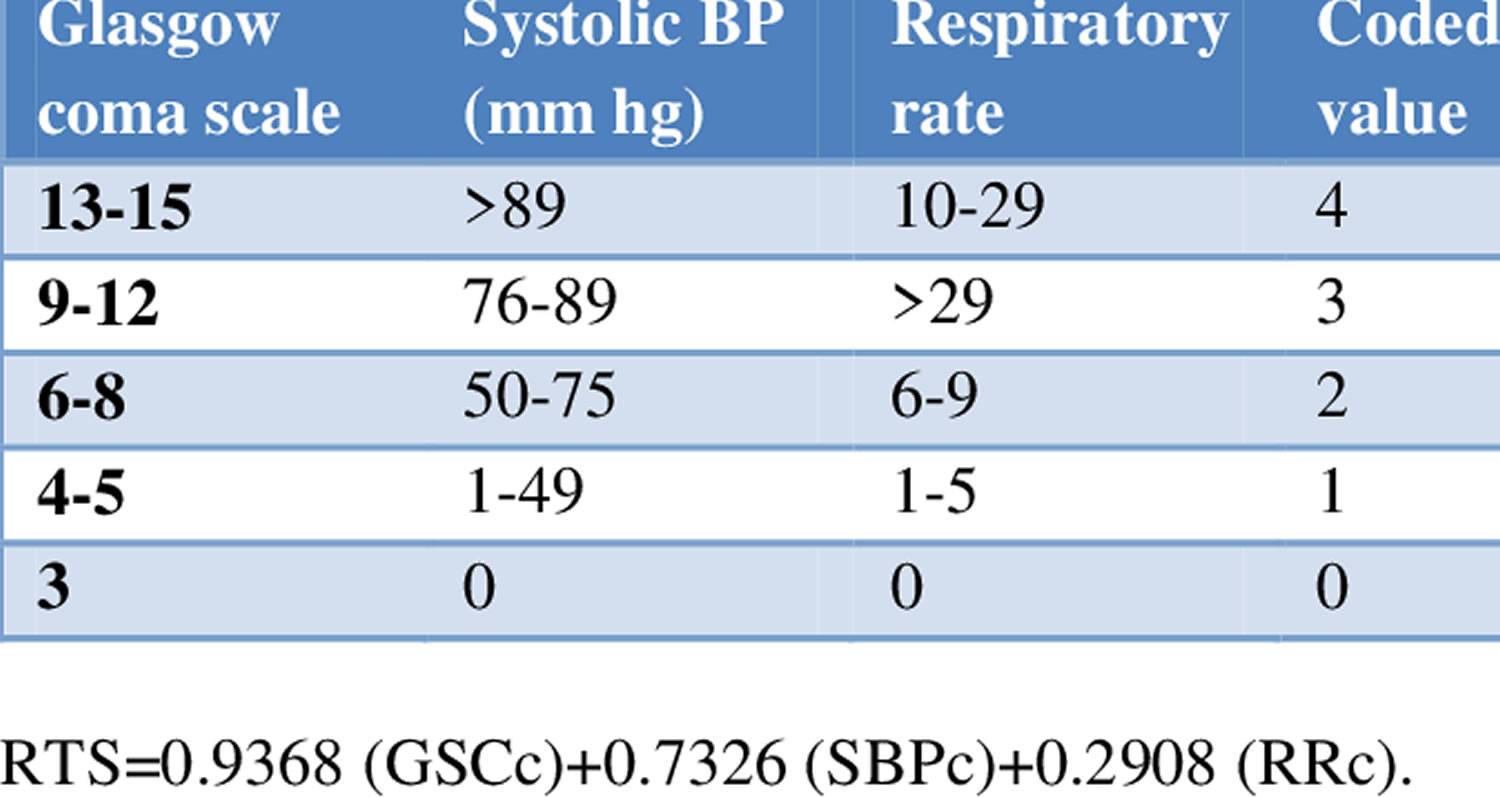Revised trauma score
The Revised Trauma Score (RTS) is a convenient physiologic-based triage score for on-site triage for trauma triage and initial severity estimation that does not require sophisticated medical tests or devices and is especially useful in prehospital and emergency department (ED) settings 1. Its superior efficiency is due to both speed and objectivity. The Revised Trauma Score is designed to provide a comprehensive assessment for medical professionals of any field. The Revised Trauma Score has been widely used to determine the prognosis of trauma patients 1.
The Revised Trauma Score scoring system consists of the Glasgow Coma Scale (GCS), systolic blood pressure (SBP) and respiratory rate (RR). The parameters are converted to coded values (0, 1, 2, 3 or 4) assigned by specified ranges. Each value is multiplied by a weighted coefficient before it is added (Table 1) 2.
The Revised Trauma Score is made up of a combination of results from three categories:
- Glasgow Coma Scale,
- Systolic Blood Pressure,
- Respiratory Rate.
Table 1. Revised Trauma Score
| Clinical Measurement | Parameter | Coded value |
|---|---|---|
| Respiratory rate | 10-29 >29 6-9 1-5 0 | 4 3 2 1 0 |
| Systolic blood pressure (mmHg) | >89 76-89 50-75 1-49 0 | 4 3 2 1 0 |
| Glasgow Coma Scale | 13-15 9-12 6-8 4-5 3 | 4 3 2 1 0 |
All of these results can be quickly assessed with minimal equipment: a flashlight, a watch and a sphygmomanometer since systolic pressure can be obtained through arterial palpation.
The Revised Trauma Score is the sum of the weighted variables (see formula below). The higher the score, the better the prognosis.
- Revised Trauma Score = (0.9368 x Glasgow Coma Scale coded value) + (0.7326 x Systolic Blood Pressure coded value) + (0.2908 x Respiratory Rate coded value).
The Revised Trauma Score range is 0-12. In START triage, a patient with a Revised Trauma Score score of 12 is labeled DELAYED (walking wounded), 11 is URGENT (intervention is required but the patient can wait a short time, and 10-3 is IMMEDIATE (immediate intervention is necessary). The last possible label is MORGUE, which is given to seriously injured people with a Revised Trauma Score of 3 or lower. These people should not receive certain care because they are unlikely to survive. This clearly has an ethical implication as treatment is intentionally withheld from some people. The reasoning is that diverting scarce resources away from people with a little chance of survival increases the chances of survival of others who are inherently more likely to survive.
References- Jeong JH, Park YJ, Kim DH, et al. The new trauma score (NTS): a modification of the revised trauma score for better trauma mortality prediction. BMC Surg. 2017;17(1):77. Published 2017 Jul 3. doi:10.1186/s12893-017-0272-4 https://www.ncbi.nlm.nih.gov/pmc/articles/PMC5496419
- Champion HR, Sacco WJ, Copes WS, Gann DS, Gennarelli TA, Flanagan ME. A revision of the trauma score. J Trauma. 1989;29:623–629. doi: 10.1097/00005373-198905000-00017





